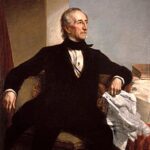The Decision Behind Maritime Modernization
President John Tyler recognized America’s urgent need for naval modernization in 1842. The nation’s wooden sailing vessels could not compete with European steam-powered fleets. Tyler’s Naval Expansion program allocated unprecedented funding for revolutionary warships and coastal defenses.
Steam-Powered Innovation and Strategic Investment
The program prioritized cutting-edge steam technology over traditional sail power. Congress approved funding for multiple steam frigates, including the USS Princeton. These vessels featured advanced propeller systems and heavy artillery. 📊 Naval appropriations increased by 40% during Tyler’s administration, demonstrating his commitment to maritime superiority.
Coastal Fortification Enhancement
Tyler’s expansion included comprehensive coastal defense improvements. New fortifications protected major ports from New York to New Orleans. The program strengthened existing installations and constructed modern artillery positions. ⚠️ Military advisors warned that outdated defenses left American commerce vulnerable to foreign threats, prompting Tyler’s decisive action.
Impact:
Immediate Maritime Advantages
Tyler’s Naval Expansion immediately enhanced America’s international standing. The new steam warships projected power across both Atlantic and Pacific waters. Foreign nations acknowledged America’s growing naval capabilities with increased diplomatic respect. 🌍 International trade agreements became more favorable as trading partners recognized American naval protection.
Economic and Commercial Benefits
Enhanced naval protection stimulated American maritime commerce significantly. Merchant vessels operated with greater confidence along expanded trade routes. The Pacific trade, particularly with Asia, flourished under naval security. 💰 Maritime insurance rates decreased as Lloyd’s of London recognized improved American naval coverage.
Long-term Constitutional and Strategic Legacy
Tyler’s program established precedent for federal naval investment authority. Later presidents referenced Tyler’s expansion when justifying maritime appropriations. The technological foundation supported Union naval superiority during the Civil War. Modern historians praise Tyler’s foresight in recognizing steam power’s strategic importance. His naval policies contributed to America’s emergence as a global maritime power by the 1850s.
